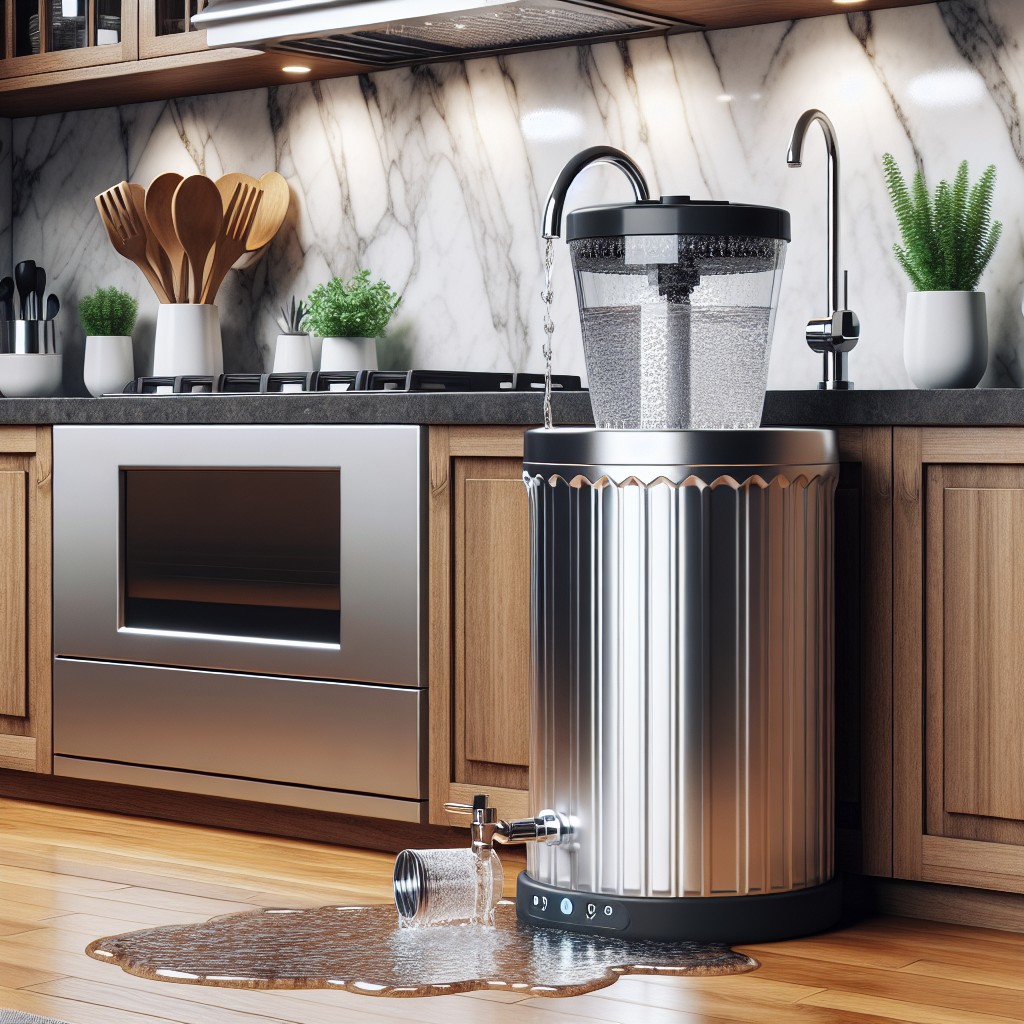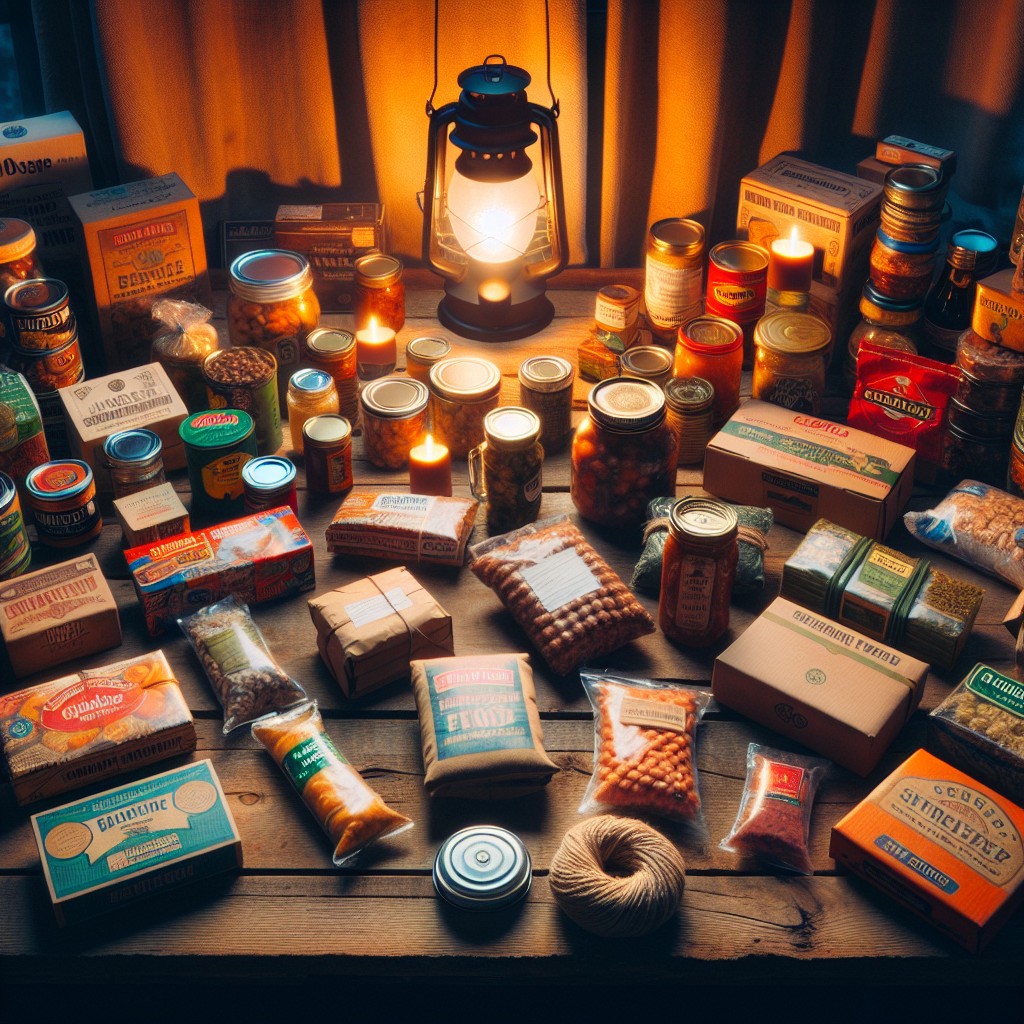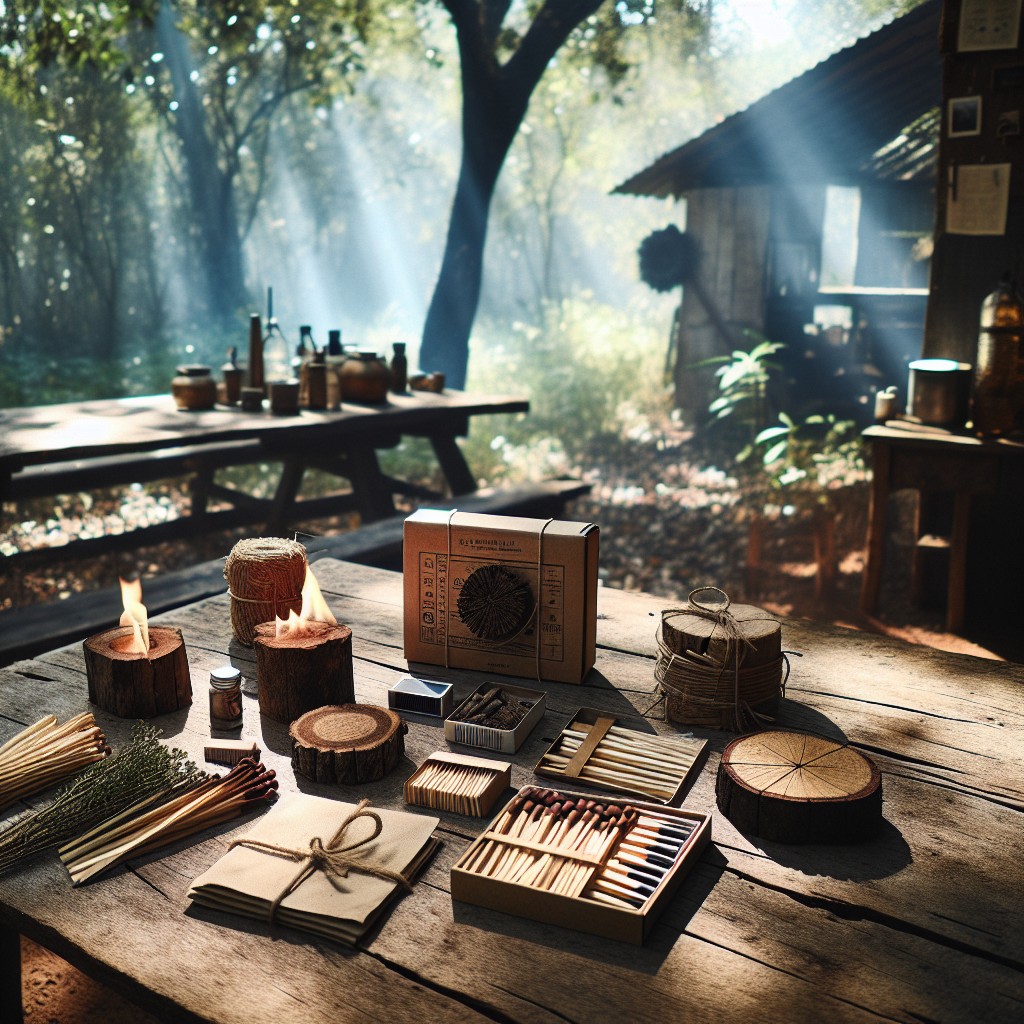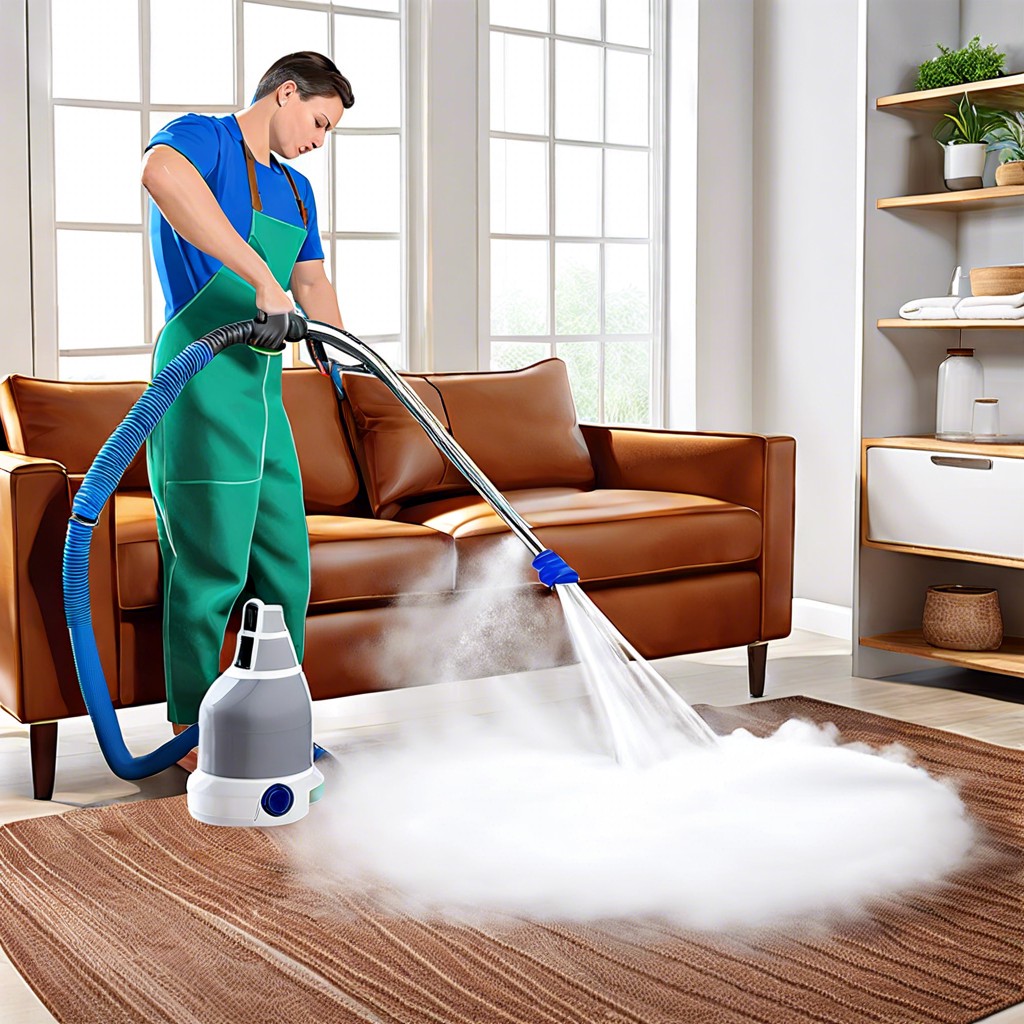Last updated on
Dive into the world of “Modern Survival Blog” because its comprehensive range of products meticulously caters to all your wilderness and emergency preparedness needs.
Key takeaways:
- Berkey Water Level Spigot advantages: real-time water monitoring, overfill prevention, easy installation, durability, and maintenance simplicity.
- Considerations when choosing an Uninterruptable Power Supply (UPS) include power capacity, battery life, number of outlets, Automatic Voltage Regulation (AVR), and form factor.
- Best emergency survival food companies: Mountain House, Augason Farms, Wise Company, Legacy Food Storage, and Thrive Life.
- Essential items for a fire starter kit: waterproof matches, lighter, ferrocerium rod, tinder (cotton balls, dry lint, birch bark, fatwood), small knife, emergency fire starter cube or stick.
- Survivalist’s “odds ‘n sods”: duct tape, zip ties, superglue, aluminum foil, baking soda, safety pins, bandanas, pencils.
- Checklist of essentials all preppers should have: water, food, first aid, tools, shelter and warmth, communication, navigation, protection.
Table of Contents
Berkey Water Level Spigot Convenience and Overfill Prevention

Integrating a Berkey Water Level Spigot into your water purification system significantly enhances user experience by streamlining water management. The spigot serves a dual purpose by offering the following advantages:
1. Real-Time Water Level Monitoring: Equipped with a transparent tube, the spigot enables you to measure the amount of filtered water available without needing to open the unit or disturb the filtration process. This visibility is particularly useful during high-demand situations or when accommodating a larger group’s hydration needs.
2. Prevention of Overfilling: The level spigot helps prevent overfilling the lower chamber, a common issue that can lead to water wastage and potential messes. By keeping an eye on the water level, users can add an appropriate amount of unfiltered water to the upper chamber.
3. Ease of Installation: Installing the water level spigot is a straightforward process. Most models are designed to replace the existing spigot and come with all necessary parts, ensuring a hassle-free update to your system.
4. Durability: Constructed from high-quality materials such as stainless steel and BPA-free plastic, the spigot is built to last, ensuring reliability over an extended period of use.
5. Maintenance Simplicity: Cleaning and maintaining the spigot is simple. Regular rinsing and occasional disassembly for thorough cleansing are all that’s required to keep it functioning optimally.
By enhancing your Berkey Water Purification system with such a convenient tool, you not only safeguard your water supply but also add a layer of practicality to your water usage regimen.
Best Uninterruptable Power Supply (UPS) For Home Use

When selecting an Uninterruptable Power Supply (UPS) for home use, it’s important to consider several key factors to ensure you’re getting a unit that meets your needs. First, assess the power capacity of the UPS, which is measured in volt-amperes (VA). Estimating the total wattage of the devices you intend to support during a power outage can help you determine the required capacity.
Another crucial aspect is the UPS’s battery life. Check the estimated run time to gauge how long the UPS will keep your devices operational. A longer battery life provides more convenience during extended outages but may also increase the unit’s size and cost.
Additionally, pay attention to the number of outlets. A higher number of both battery-backed and surge-protected outlets will give you the flexibility to connect multiple devices, such as computers, modems, and essential home appliances.
Look for a UPS that features Automatic Voltage Regulation (AVR), which maintains a consistent voltage level to your equipment, protecting it from fluctuations that can occur during an outage or from unreliable power sources.
Lastly, consider the UPS’s form factor. Some models are designed for desktop use, while others fit in an AV rack or are freestanding for more versatile placement options. The form factor will help determine how well the UPS fits into your designated space.
By keeping these points in mind, you can choose a UPS that provides reliable backup power, protects your devices, and aligns with your home’s power requirements.
Best Emergency Survival Food Companies Short List

Selecting a reliable emergency survival food company is crucial for ensuring a well-stocked supply that’s both nutritious and long-lasting. Consider shelf life, nutritional value, and the variety of meal options when choosing a provider.
Companies like Mountain House and Augason Farms offer freeze-dried meals with an extended shelf life of up to 30 years, requiring just water for preparation.
For those prioritizing organic ingredients, Wise Company provides a range of certified organic emergency foods.
In addition, Legacy Food Storage is known for its non-GMO, gluten-free options, which cater to specific dietary needs.
Additionally, Thrive Life stands out for offering a la carte ingredients, giving you the flexibility to create more personalized meals.
Prioritizing these factors ensures the emergency food supply meets both immediate and long-term needs for any situation.
Fire Starter Kit List To Do It Yourself

Building your own fire starter kit is a fundamental survival skill, ensuring you’re prepared to ignite a flame in any situation. The kit should include various tools and materials that cater to different environments and ignition methods.
First, waterproof matches and a reliable lighter are essentials, serving as the primary means to start a fire quickly. Carrying a ferrocerium rod can provide a durable, weather-resistant spark, especially beneficial in wet conditions.
Tinder is a must-have; cotton balls soaked in petroleum jelly burn hot and long, while dry lint from your clothes dryer is easily accessible and effective. For a natural touch, consider birch bark or fatwood, known for their resin content that ignites even when damp.
To round out your kit, pack a small, foldable knife for shaving fine tinder or processing kindling. An emergency fire starter cube or a commercial firestarter stick could be your saving grace when time is of the essence. Stash these components in a compact, waterproof container, and you’re ready to face the elements with a fire starter kit tailored to persistence and adaptability.
The Survivalist’s Odds ‘n Sods
In the realm of survival, attention to detail can mean the difference between thriving and barely scraping by. Consider the value of everyday items that often fly under the radar but possess multiple uses in emergencies.
1. Duct Tape – Its versatile nature allows for makeshift repairs, creating waterproof seals, or even fashioning medical splints.
2. Zip Ties – These can be used for fastening gear together, makeshift handcuffs, or securing shelter components.
3. Superglue – A quick adhesive fix for gear but also a potential solution for closing wounds when stitches are not an option.
4. Aluminum Foil – Excellent for cooking, signaling, insulation, or even sharpening scissors.
5. Baking Soda – Beyond baking, it’s a cleaning agent, fire extinguisher, and can neutralize acids in survival situations.
6. Safety Pins – Handy for gear repair, as makeshift fish hooks, or even as a component in lock-picking.
7. Bandanas – Serve as protective headgear, a method of water filtration, or a signaling device.
8. Pencils – Wood and graphite can be an unexpected source of tinder, while the tool itself remains invaluable for communication and documentation.
By incorporating such ‘odds ‘n sods’ into your survival kit, you enhance your preparedness for a wide range of scenarios. Simple items, when used creatively, can offer solutions that specialized gear might not, underlining the importance of adaptability in survival strategy.
Checklist of 101 Things All Preppers Should Have
A comprehensive preppers’ checklist is vital for ensuring preparedness for any emergency. Here are some key categories and items to consider:
- Water: Store at least one gallon per person per day and include purification tablets or a filtration system to ensure a clean supply.
- Food: Stockpile non-perishable foods like canned goods, rice, beans, and dehydrated meals that require minimal preparation.
- First Aid: Create a kit with bandages, antiseptics, prescription medications, and over-the-counter remedies for common ailments.
- Tools: Equip yourself with a multi-tool, durable knife, hatchet, and a dependable flashlight with extra batteries or a hand-crank option.
- Shelter and Warmth: Have a quality tent, emergency blankets, sleeping bags, and hand warmers to maintain your body heat in various conditions.
- Communication: A battery or crank-powered radio can provide vital information, while a whistle can signal for help when needed.
- Navigation: Physical maps and a reliable compass are essential for orienting yourself in unfamiliar territories.
- Protection: Depending on local laws and personal preference, this may include self-defense items or firearms with appropriate training and safety measures.
Remember, this isn’t an exhaustive list, and the specific needs will vary depending on individual situations and local environments. Tailor this checklist to suit your unique circumstances and regularly update your supplies to stay prepared.
Tactical Vs. Hiking Backpacks: What Are the Differences?
Tactical backpacks, often used by military personnel, are designed for durability and accessibility in high-pressure situations. They typically feature a more rugged construction with heavy-duty fabrics like nylon, a MOLLE (Modular Lightweight Load-carrying Equipment) system for attaching gear, and compartments that allow for easy organization and quick access to essentials.
On the other hand, hiking backpacks prioritize comfort and efficiency over longer distances. These packs usually have ergonomic features such as padded shoulder straps, ventilated back panels, and hip belts to distribute weight evenly. They often include integrated hydration bladders, numerous pockets for storing gear, and are generally lighter than their tactical counterparts.
One must consider the intended use when choosing between the two. A tactical backpack might suit short-term, high-intensity activities where gear needs to be within arm’s reach. In contrast, a hiking pack is better suited for recreational treks and long hikes where comfort and weight distribution are key.
21 Famous Survival Experts You Should Know
Survival experts come from a variety of backgrounds, from military veterans to naturalists, each bringing a unique perspective to the art of survival. Recognized for their expertise and often featured on television shows and in books, these individuals share their knowledge through various mediums, making survival skills more accessible to the public.
– Bear Grylls, a former British Special Forces soldier, is known for his television series “Man vs. Wild,” showcasing his ability to adapt in extreme environments.
– Les Stroud, also known as “Survivorman,” gained notoriety through his TV series where he spends up to seven days alone in the wilderness without food, water, or gear.
– Dave Canterbury’s pragmatic approach in “Dual Survival” and his “5 Cs of Survivability” prioritizes the key elements to focus on in any survival situation.
– Cody Lundin, co-star of “Dual Survival,” stands out with his expertise in aboriginal living skills and his minimalist, barefoot lifestyle.
– Mykel Hawke, a retired U.S. Army Special Forces officer, co-hosts “Man, Woman, Wild” with his wife, applying his military survival skills to teach viewers.
Their collective wisdom serves as a valuable resource for both novice and experienced survivalists, offering insights into essential skills such as fire making, shelter building, water sourcing, and navigation. Whether tailoring their advice to urban survival scenarios or untouched wilderness, these experts provide guidance for preparing mentally and physically to endure unexpected emergencies.
Is Moss Edible or Poisonous? 6 Types of Moss You Can Eat
Moss has long been considered a survival food in extreme situations. While not all types are safe for consumption, some can be eaten when foraging is necessary. It’s crucial to differentiate between edible and inedible species to avoid potential toxicity.
1. Sphagnum Moss: Commonly found in peat bogs, Sphagnum can be eaten raw but is best used to filter water due to its antiseptic properties.
2. Reindeer Moss: Despite its name, this is actually a lichen. High in carbohydrates, it must be soaked and boiled to remove acids before consumption.
3. Oak Moss: Another lichen that grows on the trunks of oak trees. Prepare by boiling to eat, but use caution as it can cause indigestion in some individuals.
4. Rock Tripe: This type of lichen needs thorough cooking. It’s used by survivalists when food is scarce but beware of its bitter taste.
5. Hair cap moss: Found in forests, this moss is safe to eat but should be cooked to remove any microscopic critters living within.
6. Wall Screw Moss: Often seen on moist, shaded rocks and walls, this moss is edible but offers little nutritional value.
Remember, proper identification is key as some mosses contain irritants or are toxic. Whenever possible, seek expert advice and always opt for thorough cooking over raw consumption to minimize risk.
Can You Drink Boiled Salt Water In An Emergency?
Boiling saltwater seems like a quick fix in a dire thirst situation, but it merely kills pathogens; the harmful salt remains. Ingesting it leads to dehydration, as your body expends more water to flush out the excess salt.
Instead, consider desalination through distillation—a process where boiled water turns to steam and is captured before recondensing into a separate container, minus the salt. This can be achieved by employing simple survival techniques involving two containers, a heat source, and perhaps plastic sheeting.
While distillation requires more effort and resources than simply boiling, it offers a safer and more effective method for making saltwater drinkable in emergencies.




